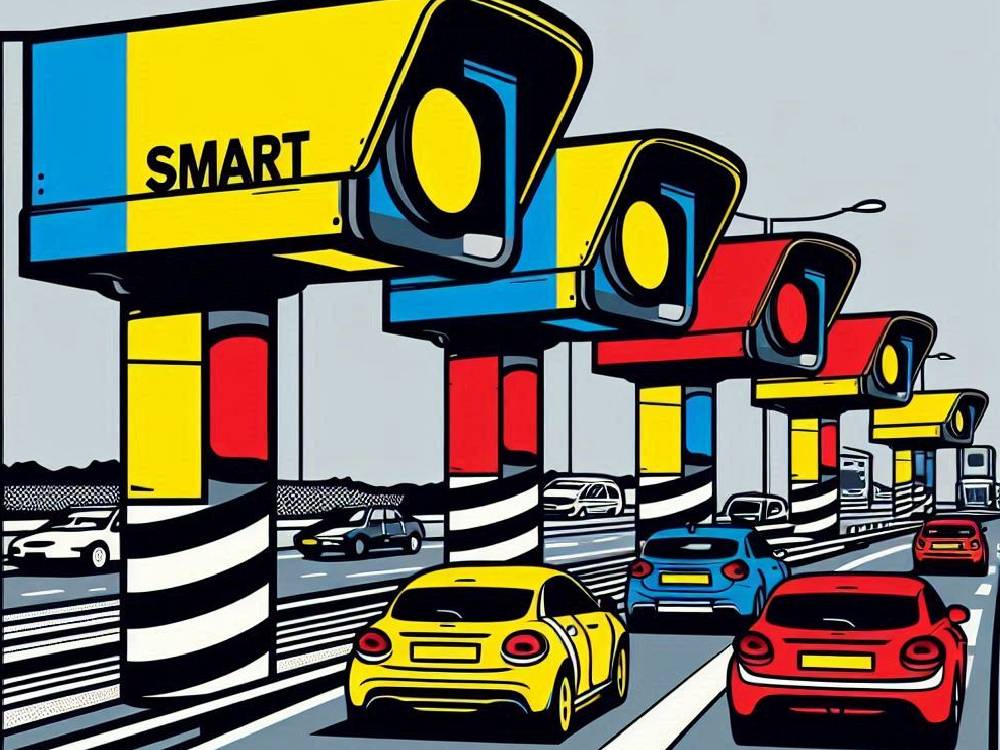Introduction
What triggers speed cameras?
You’ve probably heard it before.
That old myth: “As long as you’re not more than 10% + 2mph over, you’re safe.”
But here’s the truth…
Even 1mph over the speed limit could land you in trouble — and wreck your car insurance premiums for years.
Most UK drivers don’t realise how speed cameras really work.
Or what they actually record.
Or how fast you can go before the fine kicks in.
This guide changes that.
What Speed Really Triggers Speed Cameras?
You might not like this answer.
But it’s the one you need to hear.
There is no legal “buffer zone.”
No guaranteed grace period.
No official 10% + 2 mph rule you can rely on.
That’s right.
You’re legally speeding the second you go 1mph over the limit.
And that means you’re liable for a fine, penalty points, or worse.
“Doing 35 in a 30 zone?
That’s a common myth.
You’re not safe.”
The National Police Chiefs’ Council does recommend a 10% + 2mph margin — but it’s only guidance.
Officers aren’t required to follow it.
And camera technology?
It doesn’t care.
Some forces enforce strictly.
Others apply discretion.
But you don’t want to gamble on which type catches you.
Especially when one fine can cause your insurance premium to spike — or even be refused on renewal.
If you want peace of mind, don’t risk it.
Remember what triggers speed cameras!
What Triggers Speed Cameras: How Do They Actually Work?
Let’s break it down.
Old-school cameras used film.
They flashed. They clicked.
You knew when you got caught.
Today’s cameras?
They’re digital.
Fast.
Silent.
And unforgiving.
Speed cameras typically operate using radar, LIDAR, or road sensors embedded in the tarmac.
In addition, some systems rely on white lines painted across the road to calculate your speed based on distance over time.
Meanwhile, others monitor your average speed across several miles, rather than a single snapshot.
Even worse?
Some of them operate in complete silence — with no visible flash.
You might never know you were caught.
What do these systems record?
- Your exact speed
- Time and location of the offence
- Your number plate
- The road’s speed limit
- In many cases, a crystal-clear image of you behind the wheel
Think about what that means.
You’re not just getting clocked —
You’re being documented.
And that data doesn’t disappear.
It could show up in insurance databases later.
Modern cameras don’t miss much.
But here’s something drivers do miss:
They’re not just on motorways or A-roads anymore.
Average speed cameras are showing up on city roads, 20mph zones, and even school streets.
One slip-up in these zones can have serious consequences.
Speeding and Your Car Insurance – The Hidden Cost
It’s not just about the fine.
It’s about what happens after the fine.
Because once you get points on your licence, things get expensive — fast.
Insurers treat speeding convictions as a red flag.
That means:
- Higher premiums
- Fewer options
- Stripped no-claims bonuses
- And in some cases, denied cover altogether
If you’re shopping for cheap car insurance, one offence can ruin your chances.
Worse still?
Your quote may stay inflated for 3 to 5 years after the incident.
And multiple offences?
Expect insurers to categorise you as high-risk — even if you’ve never made a claim.
Don’t forget:
Some insurers will void your policy if you fail to declare your speeding conviction when renewing.
That’s not just expensive.
It’s potentially illegal.
If you’re relying on cheap car insurance UK, your clean driving record is everything.
Why risk that over a few extra miles per hour?
Speed Awareness Courses: Will You Be Offered One?
Here’s a common question:
“Can I just take a speed awareness course and avoid points?”
The answer?
Sometimes.
But it depends on how fast you were going, and whether you’ve done a course recently.
The threshold is usually 10% + 9 mph over the limit.
For example:
- In a 30mph zone → up to 42mph
- In a 70mph zone → up to 86mph
Anything over that?
You’re out of luck.
And if you’ve attended a course in the past three years, you won’t be offered another.
Courses are offered at police discretion, not by right.
So if you don’t respond to the notice promptly, you could lose the option entirely.
Want to stay informed?
Check out our tips for young drivers to see how early habits can shape your long-term costs.
5 Myths About Speed Cameras You Probably Still Believe
Although speed cameras are everywhere, many drivers still cling to old beliefs.
Because of that, they unknowingly risk fines, points, and insurance hikes.
So, let’s uncover the truth — one myth at a time.
1. “Speed vans must always be visible”
Not true.
While some vans remain in plain sight to deter drivers, visibility isn’t required by law.
In fact, officers could legally hide them.
So, assuming you’re safe because you didn’t spot one?
That’s a mistake.
Instead, it’s safer to assume they could be anywhere.
2. “Flashing headlights to warn other drivers is fine”
Not exactly.
Although it seems harmless, this can technically break the law.
Because under Section 89 of the Police Act 1997, warning other motorists may count as obstructing a constable.
Even though it’s difficult to prove, why risk it?
3. “Speed cameras don’t work in bad weather or darkness”
Wrong again.
Modern cameras use infrared technology, so they work in rain, fog, and even complete darkness.
Therefore, you can’t rely on poor weather conditions to save you from detection.
Speeding in bad weather is more dangerous — not less likely to get caught.
4. “Only fixed cameras matter”
That’s an outdated belief.
Besides fixed yellow boxes, you also need to watch for:
- Mobile enforcement vans
- Average speed cameras
- Rear-facing digital units
Because of these, enforcement now extends far beyond traditional setups.
5. “10% + 2 mph over the limit is legal”
Here’s the truth:
That margin is guidance — not a legal right.
Although some forces use discretion based on the 10% + 2 rule, others enforce the limit strictly.
So, if you’re even 1mph over, you’re technically breaking the law.
Therefore, the only safe speed is within the limit.
What Happens If You’re Caught?
Now let’s look at the consequences.
Although the minimum penalty is usually £100 and 3 points, that’s rarely the end of it.
Because the real damage often comes later.
First of all, you may end up in court if your speed was excessive.
Additionally, you could lose your licence — either temporarily or permanently.
Therefore, what seems like a minor slip could lead to serious legal trouble.
More importantly, your car insurance will suffer.
As soon as the offence hits your record, insurers flag you as higher risk.
That means:
- Premiums increase
- Fewer providers offer quotes
- No-claims bonuses shrink or disappear
Because of these risks, staying within the limit helps keep your insurance costs low.
So, what if you forget to declare a conviction?
That’s even worse.
If your insurer finds out later, they could cancel your policy or refuse to pay out on claims.
As a result, you may end up uninsured without even knowing it.
Tips on how penalty points impact your insurance.
Why Playing The Odds Isn’t Worth It
Now ask yourself this:
Is saving 30 seconds really worth the risk?
Because with smart speed cameras now rolling out nationwide, enforcement has become faster, smarter, and harder to avoid.
These systems:
- Don’t need a flash
- Work in all weather conditions
- Monitor average speed over long distances
Therefore, you can’t outsmart them.
Even if you believe you’re a good driver, one mistake can change everything.
Not only could it cost you in fines, but it could also raise your insurance premiums by hundreds of pounds.
So, don’t gamble on enforcement zones or myths.
Instead, focus on driving safely every time you get behind the wheel.
Sticking to the limit won’t just protect your record.
It also protects your ability to qualify for cheap car insurance UK deals when it matters most.
Conclusion
So what triggers speed cameras, and should we be worried?
Let’s be honest.
Although many people believe speed cameras offer leeway, that belief doesn’t hold up under scrutiny.
As soon as you exceed the speed limit — even slightly — you’re at risk of enforcement.
Because of this, relying on myths like “10% + 2” could cost you far more than you expect.
So, what should you do instead?
Drive within the limits.
Stay aware of how cameras operate.
And make sure your driving habits don’t sabotage your insurance options.
If you’re serious about reducing costs, now is the time to explore our deals on very cheap car insurance.
Because while speeding may feel minor in the moment, the financial impact can last for years.
- The Dash Cam Mistakes That Could Cost You
- Mandatory Speed Limiters: What UK Drivers Need to Know
- Speeding Offences in the UK at an All-Time High






